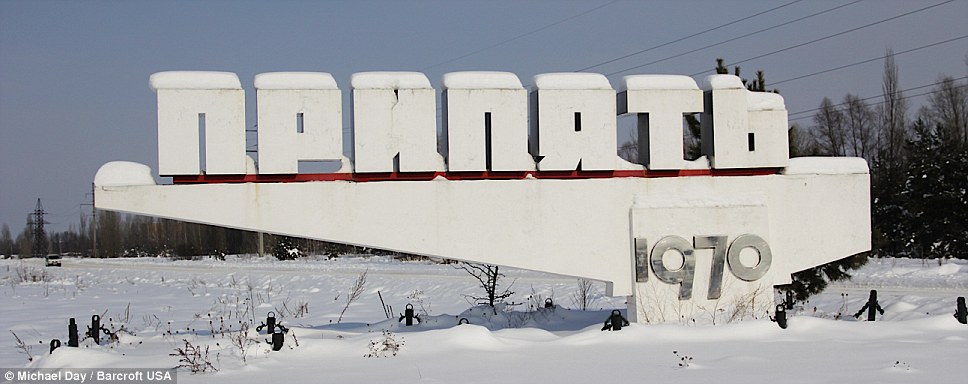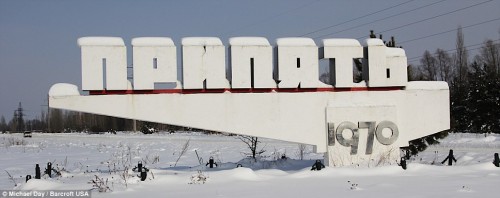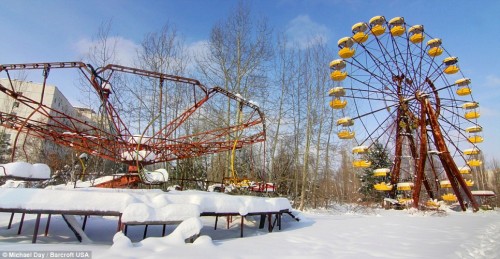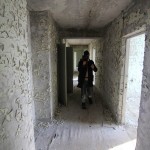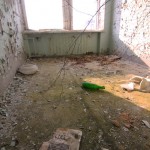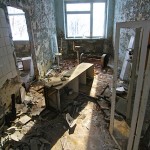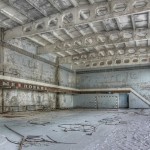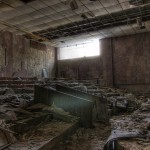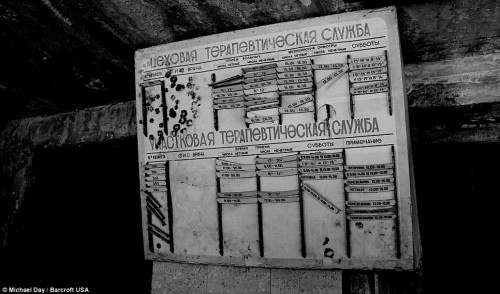Yes, I am an old guy, I admit it. I remember things that happened long ago, such as the moon landing, Vietnam and the day the Berlin Wall came tumbling down.
Many of you haven’t been alive long enough to witness world changing events such as nuclear disasters. While everyone watched in horror as japan was wrestling with a nuclear event last year, some of us were reminded of previous accidents that happened on our very soil, such as Three Mile Island.
Pripyat in the Ukraine was once a bustling town of 50,000. The local nuclear power plant was the main source of income for the city and thousands of families depended on it for their livelihood.
Now 26 years after the devastation of Chernobyl the once beautiful city is in ruins. If you look close enough you can still see the ghosts of a once happy and hard working population.
In this pictorial, the Daily News gives us a chilling look back in history from the perspective of the ghost town left behind:
Nuclear ghost town: Eerie images show wasteland that was once a thriving city of 50,000 before the Chernobyl disaster
They could be images from a post-apocalyptic horror film – haunting photographs of a once-busy city now hanging in time.
But this urban centre – totally empty of people and even with an abandoned amusement park – is a real place.
Pripyat, in Ukraine, once housed thousands of families of men and women working at the nearby Chernobyl nuclear power plant.
But on April 26, 1986 disaster struck – when an explosion at the plant caused radiation to leak from a nuclear reactor.
The 50,000 residents of Pripyat – now a ghost town – were evacuated in a major government operation starting the day after the catastrophe, on April 27.
The battle to contain the contamination and avert a greater catastrophe ultimately involved over 500,000 workers and cost an estimated 18 billion rubles, crippling the Soviet economy.
More than 25 years after the city was emptied, Pripyat now stands untouched from the day everyone left.
British hobby photographer Michael Day, 29, an air traffic controller from London who works in Aberdeen, Scotland, visited the disaster scene by escort to capture it on camera.
His mesmerising images show how newspapers are still littered about – left in the exact spot they were thrown aside on the day of disaster.
A roster from Pripyat hospital still hangs in silence – listing patients who were being cared for before the fire ripped through Chernobyl.
Drugs at the hospital still lay scattered around.
Discarded shoes cover the floor of a shop while empty goalposts lie unused inside the old sports hall at the city’s Palace of Culture – a community centre.
Mr Day said: ‘It really felt like the town had just stopped in 1986. It was like a living museum.
‘The years of neglect and abandon mean that vegetation has grown unchecked for 26 years, meaning Pripyat is now contained inside a forest.
‘The gardens and parkland between the buildings have grown, and it is now impossible to get a sense of the scale of the place as you generally cannot see past a few buildings, away from the roads.
‘Once inside the town itself, you really feel like you are in woodland, with only subtle clues that you are completely surrounded by apartments and shops and workplaces in between the trees.’
While it is illegal to take items in or out of Pripyat, because of fears of spreading the radioactive contamination, a few graffiti artists and animals still manage to sneak in.
‘There are animal tracks now and again, ranging from birds to fox tracks,’ Mr Day said.
‘The escort told us that wolves had been sighted once. There is also evidence of vandalism but no squatters.
‘It is unclear how people have entered Pripyat unsupervised, perhaps long ago before stricter controls on the exclusion zone were enforced.’
After leaving, all visitors granted access are scanned for absorbed doses of radiation.
Mr Day said: ‘If the safe dose is exceeded, your belongings are removed they give you a chemical shower.’
Thirty-one reactor staff and emergency workers were killed in the nuclear disaster, although a report in 2006 estimated the spread of radiation would eventually lead to between 30,000 and 60,000 cancer deaths.
Wow! 30 – 60 thousand will die of cancer specifically because of this accident.
There are those that claim nuclear energy is the way to go and is the answer to our world energy problems but there is one place where they might disagree with you. I now live in Illinois where looking at a map of nuclear locations it seems we have more of these sites that we have some fast food joints. Both kill you slowly but if I were to choose…..
Is it really that difficult to come up with energy? Or maybe the profit margin is too far off for those who can afford such advances.
I see geothermal as a terrific source of energy but it seem only a few are utilizing the power of deep earth. Furthermore, we have wind, solar and even the tides to give us energy and it’s all clean and non-threatening.
For as hard as people worked to bring nuclear energy into operation, there most certainly must be a way to go in a different direction.
Unfortunately, it’s going to take a lot more than a few disasters to shock the world into making major changes.
Thanks to The Daily News for this pictorial.
Associated Content:
Chernobyl Disaster
More Chernobyl Photos (Warning: Some of these pictures are upsetting)
Three Mile Island Meltdown

